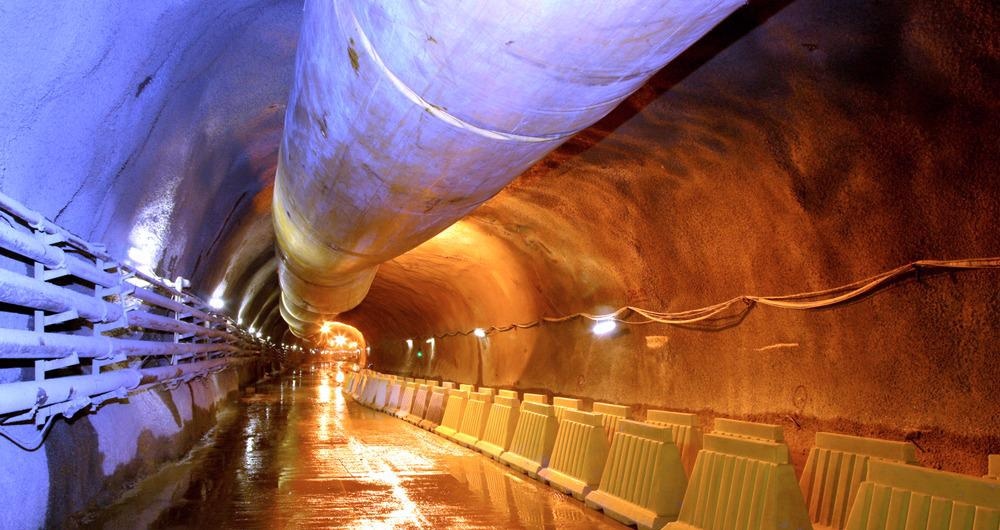Today’s mining operations are having to dig deeper and reach more remote locations to access the ever-depleting resources required. These activities are energy-intensive, and there is an industry and social demand to reduce energy consumption, and for sustainable sources to provide this energy.

Image Credit: Ric Campos/Shutterstock.com
One way to reduce mining energy consumption is with ventilation on demand (VOD). This means supplying the required amount of fresh air to separate mining areas when needed. This encourages a dynamic and intelligent air supply that reduces the total required airflow, therefore reducing energy requirements and offering a cleaner and safer mine.
Ventilation Optimization in Mining
The importance of ventilation in mines is well documented. The deeper the mine is, the thicker the air becomes, making it difficult to breathe. Going deeper also increases the heat emitted by strata, coupled with higher shock and friction losses, meaning it is also hotter. Fresh, clean air needs to be regularly circulated around mines to reduce the temperature and ensure the health and safety of personnel.
This need is enhanced by the use of diesel to power mining equipment. Although mining is increasingly becoming electrified, diesel is still heavily relied upon. While it is an efficient fuel, diesel is also dirty, expensive, and in limited supply. Furthermore, its emissions are carcinogenic to humans and increase the demand for airflow.
New technologies such as pneumatic and electric motors have enabled larger mines to install fans to provide vast volumes of air, while smaller fans improve airflow in the underground systems. The introduction of ventilation software has made it relatively simple to plan a mine ventilation system before the project even begins.
However, many ventilation systems are not reaching their full potential; they are not optimized, instead of running on a set-and-forget mentality. Such systems run untouched and only receive additional volumes if and when new sections of the mine are opened, resulting in an overall loss of efficiency.
On average, ventilation accounts for almost half of a mine’s energy costs and up to 15% of a mine’s total cost. With increasing energy costs and tighter occupational exposure limits regarding gas and dust, there is an increasing need to improve ventilation systems to reduce energy consumption.
Developing a Ventilation on Demand System
VOD offers mining companies the chance to optimize their ventilation network by controlling the flow of air within regulatory demands. This can boost production and save energy, and works dynamically, beyond the set-and-forget mentality.
There are a number of ways to ventilate mines; depending on individual requirements, this could be a push or pull system (where the exhaust is pulled out of the mine and fresh air pumped in), U-tube, or flow-through in which air flows towards and through the working area and returns along the adjacent airways, or split, perimeter or unit ventilation system.
Before a ventilation system is adopted, the following questions should be asked:
- Do all areas need to be ventilated?
- Do they require a constant volume?
- Are all auxiliary systems required at the same time?
- Has the original system design criteria been exceeded?
- Is ventilation required in non-active periods?
Precisely defining local air demands necessitates a detailed knowledge of the mine ventilation network, the ongoing processes, and current regulatory demands. Companies should consider utilizing a tagging system to help keep tabs on machinery and personnel to optimize and direct airflow to specific areas as appropriate.
Information on personnel and machinery (and their properties) must be analyzed to define the required volume flows and adequate reactions. Infrastructure needs to be installed to change the airflow to the calculated requirements, ideally controlled remotely to guarantee short reaction times.
However, calculating static demand is not enough. The network should be monitored with gas detection sensors and devices to analyze air quality and react, with higher flow rates for example, as required. This will ensure the system is quality-based and able to react to spontaneous events, rather than quantity-based.
Types of VOD Systems
There are various types of systems that can be installed, ranging from a simple, manual-controlled system, to a tagging system as described above. The greater the grade of implementation, the greater the savings that can be made.
A manual control system allows fans to be manually switched on and off, and regulators and doors varied The next level is a Time-of-Day Scheduling, which uses a pre-set daily on/off pattern, much like a central heating system.
Event-based systems change the ventilation depending on the activities of the mine, e.g., switching on an auxiliary fan after blasting to shorten clearance time. This system builds in an adequate reaction time in case of unexpected events such as fires.
Tagging, as previously described, gives companies detailed information on where their personnel and equipment are to define ventilation needs, while environmental systems respond to any changes of the in-time conditions underground.
Conclusion
The aim of VOD is to save energy and, where possible, increase productivity, or to expand the mining network within the available ventilation utilities. The combination of a ventilation system and VOD software enables mines to receive the required airflow, at the required time, while monitoring systems validate quality. Optimizing processes such as blasting, extraction, and haulage can also further increase efficiency, while smart load management can lower costs.
However, further research is necessary to achieve the most out of ventilation on demand.
References and Further Reading
Dicks, F. et al. (2021) Ventilation on Demand, Mining Report [online] https://mining-report.de/english/ventilation-on-demand/
Mine (2020) Five Key innovations in Mining Ventilation, mine [online] https://mine.nridigital.com/mine_jun20/mining_ventilation_innovation
Sandeep Kumar, A. et al (2020) Underground Mine Ventilation – A Case Study, International Research Journal of Engineering and Technology (IRJET) [online] https://www.irjet.net/archives/V7/i6/IRJET-V7I6947.pdf
Disclaimer: The views expressed here are those of the author expressed in their private capacity and do not necessarily represent the views of AZoM.com Limited T/A AZoNetwork the owner and operator of this website. This disclaimer forms part of the Terms and conditions of use of this website.